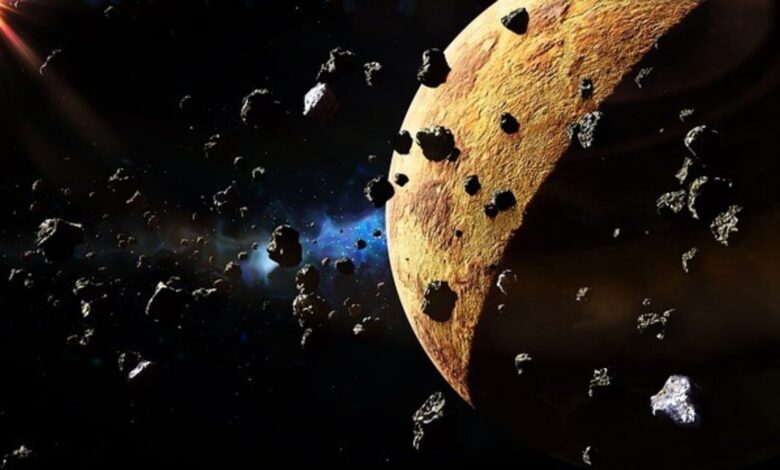
Have you ever wondered what would happen if Earth were to be hit by an asteroid? The mere thought of it is terrifying. Though it hasn’t happened in a while, the threat of an asteroid collision is always looming. That’s why space agencies like NASA are constantly monitoring all asteroids approaching Earth. While we may not have the power to stop an approaching asteroid, NASA has successfully tested a mission called DART, where they were able to divert an asteroid from its path.
Recently, NASA announced that its OSIRIS-REx spacecraft is expected to deliver a capsule containing samples from the Bennu asteroid on September 24th. These samples can provide valuable insights into the origin of our solar system and the Bennu asteroid itself, which is projected to come very close to Earth in the future.
Aside from Bennu, there are numerous other asteroids that visit our planet. NASA has now tracked another asteroid called 2023 SQ1, which is approaching Earth rapidly and will come very close tomorrow. Let’s take a closer look at what this asteroid means for Earth:
Asteroid 2023 SQ1
According to recent data from NASA, an asteroid known as 2023 SQ1 is hurtling towards Earth. This asteroid, which is the size of a house, measures 58 feet in width. It is expected to make a close approach to Earth on September 24th, with an estimated distance of 2.09 million kilometers. NASA first observed this asteroid on September 12th and its last sighting was on September 19th. It is currently moving towards Earth at a speed of 73,868 kilometers per hour.
Is it hazardous?
According to NASA, this asteroid belongs to the Apollo family, which are considered potentially hazardous asteroids. However, due to its small size, Asteroid 2023 SQ1 may not pose a significant threat to our planet. NASA defines potentially hazardous asteroids as those with a size larger than 492 feet. Nonetheless, even small asteroids can cause considerable damage, as seen with the Chelyabinsk meteor in 2013. Despite being only 59 feet wide, it injured 1,200 people when it exploded over Russia’s southern Urals region.
It is important to stay informed about asteroids approaching Earth and the efforts being made by organizations like NASA to monitor and study them. While the chances of a catastrophic asteroid collision may be rare, it highlights the need for continued research and preparedness to protect our planet from potential threats from space.
Remember, the universe is vast, and there is still much to learn about the celestial bodies that surround us. Stay curious and keep a watchful eye on the skies!




